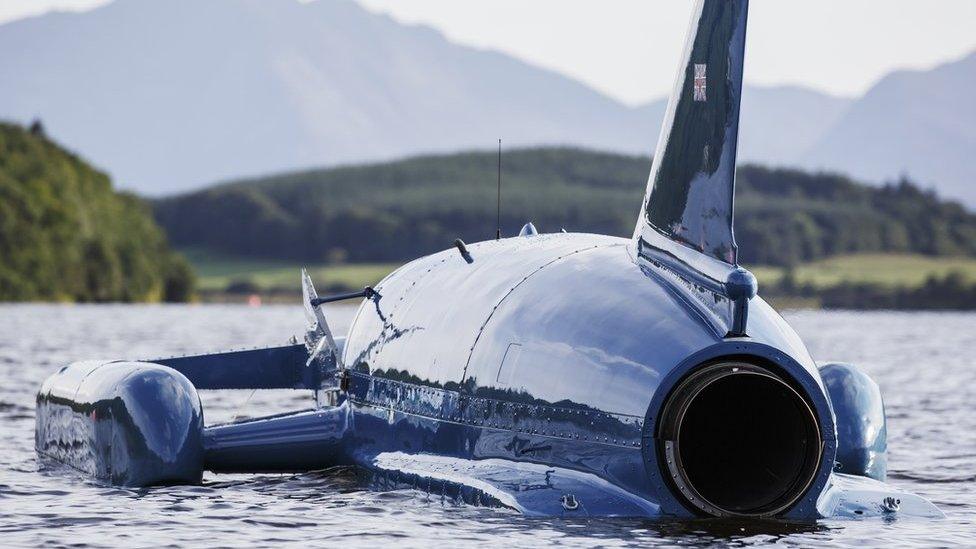Donald Campbell's Bluebird to return to Coniston after row settled
- Published
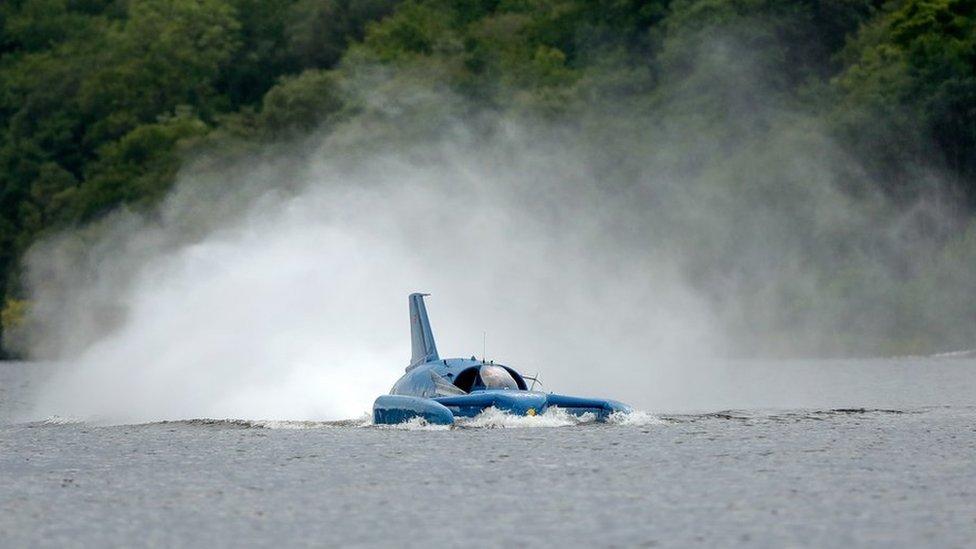
A restored Bluebird ran on Loch Fad in August 2018
Donald Campbell's record-breaking Bluebird is to return to the Lake District after a years-long ownership row was settled.
The hydroplane's wreckage was recovered from Coniston Water in 2001 by engineer Bill Smith.
He was later enlisted to restore it by Coniston's Ruskin Museum and went on to claim a stake in its ownership.
Mr Campbell was killed in January 1967 as he attempted to set a water speed world record on the lake.
The museum was gifted the wreckage in 2006 by his daughter, Gina Campbell, on the understanding Mr Smith would restore it at his workshop in North Shields.
A Ruskin Museum spokesman said "an agreement has been reached" which would see the craft returned to Coniston in the near future.
"Bluebird will be back within a stone's throw of its skipper who is buried in the village. It is right and proper that it is there."
A timetable for its return will be finalised over the coming weeks, he added.
It will take centre-stage in the museum's dedicated Bluebird Wing, which was built several years ago at a cost of about £750,000 in anticipation of the hydroplane's restoration.
'Heart-wrenching'
Ms Campbell said she was "relieved" the row had been brought to an end without a court appearance.
"It will be heart-wrenching for Bill. I understand that emotion," she said.
"The work he and the team of volunteers have done to restore it must be acknowledged. They've done a magnificent job.
"But Bluebird will be on display for the world to see, as it should be."

Timeline of a tragedy
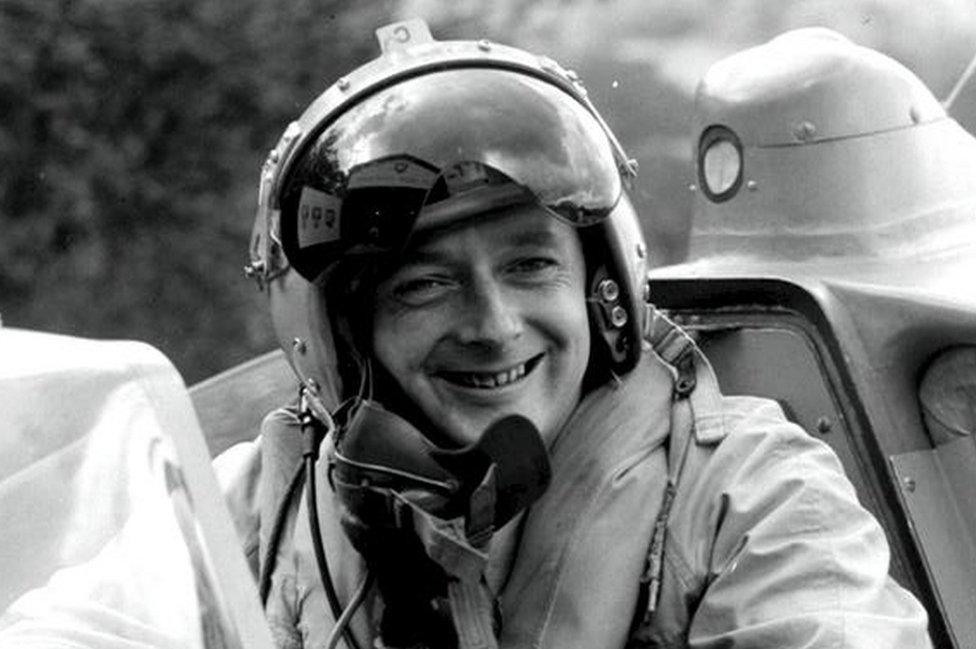
Donald Campbell set seven water-speed world records, including four on Coniston Water, between 1955 and 1964
He achieved a further world best on land in 1964 - becoming the only man to set fastest times on water and land in the same year
Bidding to smash his mark of 276mph (444km/h), he was killed when Bluebird somersaulted on 4 January 1967
The wreckage was raised by Bill Smith's dive team on 8 March 2001
Campbell's body was recovered on 28 May that year and he was buried in the village on 12 September


Bill Smith recovered Bluebird's wreckage in March 2001
Mr Smith previously said he would "fight to the death" after legal proceedings were issued.
But speaking to the BBC on Friday, he said his Bluebird Project team had "decided to walk away" and described the outcome as "a hollow victory" for the museum.
"We've had years of trying to get them round the table and the deal was we'd look after the boat and run it for a few months each year.
"The legal action was unnecessary. We thought we were getting somewhere with trying to arrange a compromise. Eventually we just thought enough is enough.
"The boat's in first-class condition and will run at the push of a button. We always wanted it to be a fully operational machine, we've no interest in a static display.
"Now the engine will come out and various other bits and pieces."
Asked whether legal costs had been a factor, Mr Smith said: "Cost was not a consideration. In terms of financial backing, we could've played this game for another five years but that idea became less appealing."
In 2018, the Bluebird Project team ran the craft for the first time in 50 years when it was launched on Loch Fad on the Isle of Bute.
A further display in North Yorkshire last February was called off following the legal action.

Follow BBC Cumbria on Facebook, external, X (formerly Twitter), , externaland Instagram, external. Send your story ideas to northeastandcumbria@bbc.co.uk, external.
Related topics
- Published26 February 2023
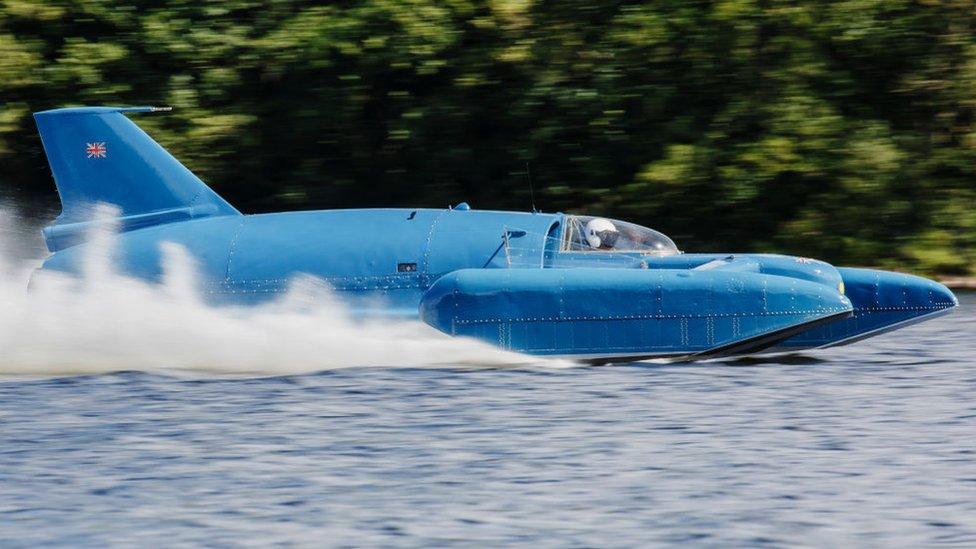
- Published19 September 2021
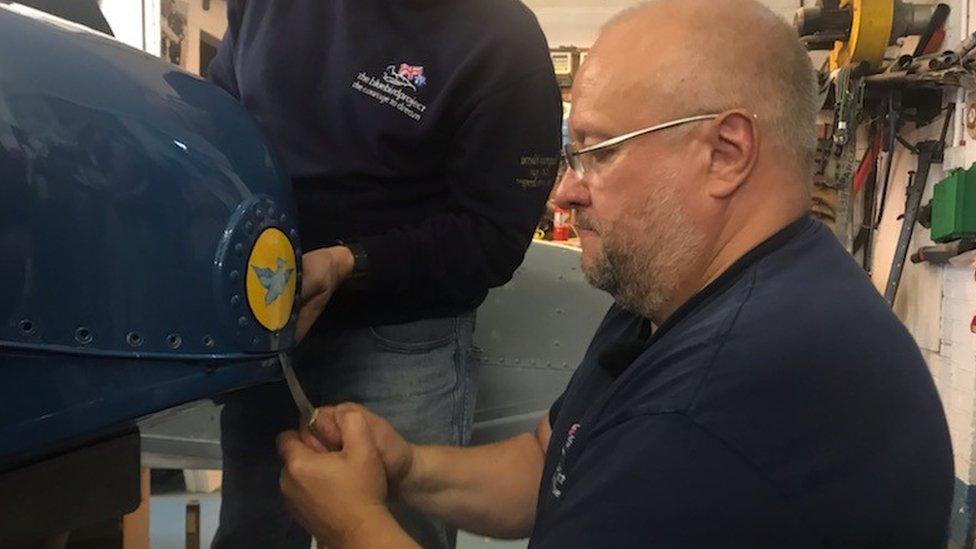
- Published12 February 2019
